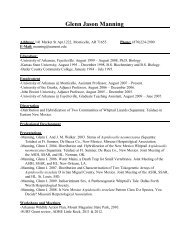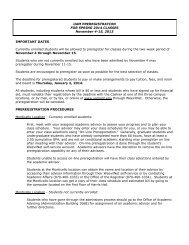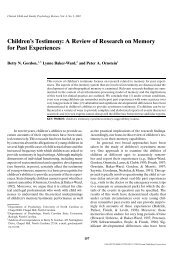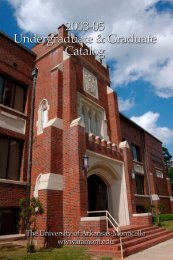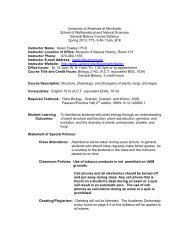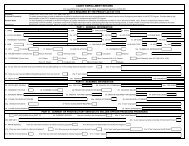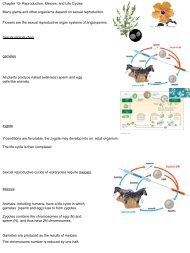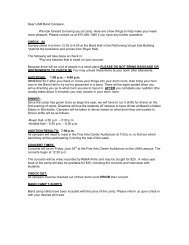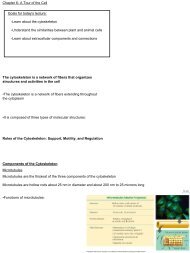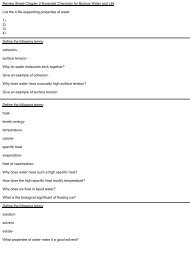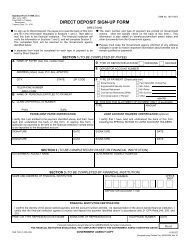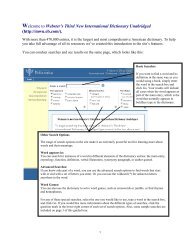A TAAP - University of Arkansas at Monticello
A TAAP - University of Arkansas at Monticello
A TAAP - University of Arkansas at Monticello
You also want an ePaper? Increase the reach of your titles
YUMPU automatically turns print PDFs into web optimized ePapers that Google loves.
PART III Geometry Curriculum Framework––April 2007<br />
The <strong>Arkansas</strong> Geometry M<strong>at</strong>hem<strong>at</strong>ics Curriculum Framework*<br />
Strands Content Standards Student Learning Expect<strong>at</strong>ions<br />
1—LANGUAGE OF GEOMETRY<br />
(LG)<br />
1. Students will develop the language<br />
<strong>of</strong> geometry including specialized<br />
vocabulary, reasoning, and<br />
applic<strong>at</strong>ion <strong>of</strong> theorems, properties,<br />
and postul<strong>at</strong>es.<br />
2—TRIANGLES (T) 2. Students will identify and describe<br />
types <strong>of</strong> triangles and their special<br />
segments. Students will use logic<br />
to apply the properties <strong>of</strong><br />
congruence, similarity, and<br />
inequalities. Students will apply the<br />
Pythagorean Theorem and<br />
trigonometric r<strong>at</strong>ios to solve<br />
problems in real-world situ<strong>at</strong>ions.<br />
3—MEASUREMENT (M) 3. Students will measure and<br />
compare, while using appropri<strong>at</strong>e<br />
formulas, tools, and technology, to<br />
solve problems dealing with length,<br />
perimeter, area, and volume.<br />
36<br />
1. Define, compare, and contrast inductive reasoning and<br />
deductive reasoning for making predictions based on real-<br />
world situ<strong>at</strong>ions:<br />
• Venn diagrams<br />
• m<strong>at</strong>rix logic<br />
• conditional st<strong>at</strong>ements (st<strong>at</strong>ement, inverse,<br />
converse, and contrapositive)<br />
3. Describe rel<strong>at</strong>ionships derived from geometric figures or<br />
figural p<strong>at</strong>terns.<br />
4. Apply, with and without appropri<strong>at</strong>e technology, definitions,<br />
theorems, properties, and postul<strong>at</strong>es rel<strong>at</strong>ed to such topics<br />
as complementary, supplementary, vertical angles, linear<br />
pairs, and angles formed by perpendicular lines.<br />
5. Explore, with and without appropri<strong>at</strong>e technology, the<br />
rel<strong>at</strong>ionship between angles formed by two lines cut by a<br />
transversal to justify when lines are parallel.<br />
1. Apply congruence (SSS ...) and similarity (AA ...)<br />
correspondences and properties <strong>of</strong> figures to find missing<br />
parts <strong>of</strong> geometric figures and provide logical justific<strong>at</strong>ion.<br />
2. Investig<strong>at</strong>e the measures <strong>of</strong> segments to determine the<br />
existence <strong>of</strong> triangles (triangle inequality theorem).<br />
3. Identify and use the special segments <strong>of</strong> triangles (altitude,<br />
median, angle bisector, perpendicular bisector, and<br />
midsegment) to solve problems.<br />
4. Apply the Pythagorean Theorem and its converse in solving<br />
practical problems.<br />
5. Use the special right triangle rel<strong>at</strong>ionships (30°-60°-90° and<br />
45°-45°-90°) to solve problems.<br />
6. Use trigonometric r<strong>at</strong>ios (sine, cosine, tangent) to determine<br />
lengths <strong>of</strong> sides and measures <strong>of</strong> angles in right triangles,<br />
including angles <strong>of</strong> elev<strong>at</strong>ion and angles <strong>of</strong> depression.<br />
1. Calcul<strong>at</strong>e probabilities arising in geometric contexts. (Ex.<br />
Find the probability <strong>of</strong> hitting a particular ring on a dartboard.)<br />
2. Apply, using appropri<strong>at</strong>e units, appropri<strong>at</strong>e formulas (area,<br />
perimeter, surface area, volume) to solve applic<strong>at</strong>ion<br />
problems involving polygons, prisms, pyramids, cones,<br />
cylinders, and spheres, as well as composite figures,<br />
expressing solutions in both exact and approxim<strong>at</strong>e forms.<br />
3. Rel<strong>at</strong>e changes in the measurement <strong>of</strong> one <strong>at</strong>tribute <strong>of</strong> an<br />
object to changes in other <strong>at</strong>tributes. (Ex. How does<br />
changing the radius or height <strong>of</strong> a cylinder affect its surface<br />
area or volume?)<br />
4. Use (given similar geometric objects) proportional reasoning<br />
to solve practical problems (including scale drawings).<br />
* The Content Standards and Student Learning Expect<strong>at</strong>ions listed are those th<strong>at</strong> specifically rel<strong>at</strong>e to the released test<br />
items in this booklet.



